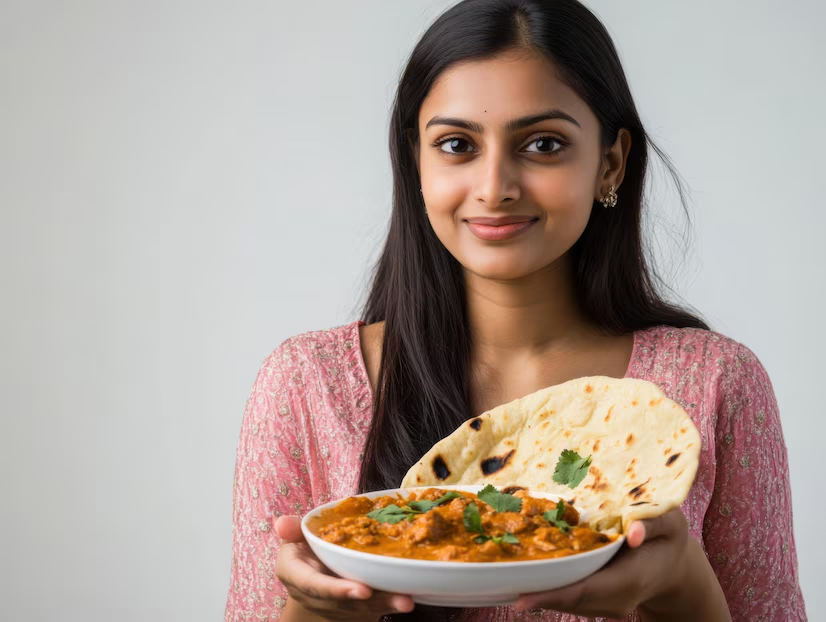Contents
- 1 Every Kitchen Has a Bag of Maida That Can Be Used to Make Soft Cakes, Fluffy Parathas, or Crispy Puris
- 1.1 Why Maida Needs a New Look for Health
- 1.2 Knowing What Maida Does in Your Diet
- 1.3 Small Changes Can Make a Big Difference
- 1.4 Ways to Cook Healthier
- 1.5 Mindful Pairings and Portion Control
- 1.6 Adding to Nutrition
- 1.7 Watching the Extras
- 1.8 Trying Out Different Tastes
- 1.9 Getting Used to Making Healthy Maida Dishes
- 1.10 Paying Attention to Your Body
- 1.11 Ending the Healthy Maida Journey
- 1.12 FAQs
- 1.12.1 What are the best ways to make maida dishes healthier?
- 1.12.2 Which are the top maida-based recipes for healthy cooking?
- 1.12.3 How can I reduce sugar and refined flour in desserts?
- 1.12.4 Where can I find healthy cooking tips for maida dishes online?
- 1.12.5 How can I make maida dishes more nutritious?
Every Kitchen Has a Bag of Maida That Can Be Used to Make Soft Cakes, Fluffy Parathas, or Crispy Puris
Every kitchen has a bag of maida (refined flour) that can be used to make soft cakes, fluffy parathas, or crispy puris. It’s a staple that makes you feel at home, but the thought of giving in to it often makes you feel bad. Is maida really as bad as people say it is? The truth is that you can make your favourite maida dishes healthier without losing flavour by making a few smart changes. This blog is for people who love their noodles or naan but want to feel good about eating them. Let’s talk about some real ways to make maida dishes healthy and tasty so that you can enjoy your meals and feel good about your body.
Why Maida Needs a New Look for Health
People love maida, or refined flour, because it can be used in so many ways and has a smooth texture. It’s a must-have for everything from pastries that melt in your mouth to doughs that stretch. It doesn’t have the fibre, vitamins, and minerals that whole grains do, though, so it might not be as healthy. Eating it often could cause your blood sugar to rise quickly or make you feel tired. The good news is? You don’t have to give up maida completely. You can make your favourite foods healthier by mixing them with foods that are high in nutrients and using smarter cooking methods.
Knowing What Maida Does in Your Diet
During processing, the bran and germ are taken out of the maida, leaving mostly starch. Compared to whole wheat or millets, this is less filling and has fewer nutrients. It’s okay to eat maida-based foods in moderation, but if you eat a lot of them, they can push out foods that are better for you. The goal isn’t to make maida look bad; it’s to add ingredients that make it healthier. It’s like giving your dough a sidekick who is a superhero.
Small Changes Can Make a Big Difference
You don’t have to use hard-to-find or expensive ingredients to make maida dishes healthier. It’s about making small, long-lasting changes that you can easily add to your daily cooking. These changes can make your food healthier without changing the way it tastes, whether you’re kneading dough for chapatis or baking cookies.
For Healthier Maida Dishes, Try These Smart Ingredient Swaps
One of the easiest ways to make maida dishes healthier is to add alternatives that are full of nutrients. Mix maida with whole grain flours or other healthy foods instead of using it by itself. When making parathas or naan, for instance, mix maida with atta (whole wheat flour). This adds fibre, which helps with digestion and keeps you full longer. You can also try using flours like ragi or oats, which have a nutty flavour and more nutrients.
Vegetable purees are another great thing to add. Add spinach, beetroot, or carrot puree to your dough to make it more colourful and give it more vitamins. These not only make your food healthier, but they also look good. To make baked goods healthier, you could use almond flour or mashed bananas instead of some of the maida. This will cut down on refined flour and add healthy fats and natural sweetness.
Tarla Dalal’s guide to healthy baking has useful tips for adding nutrient-rich ingredients to everyday recipes. You can use this book to get ideas for using different types of flour.
Visit: Tarla Dalal Official Site
Ways to Cook Healthier
What you put in your maida dishes is just as important as how you cook them. Deep-frying samosas or puris in oil can add extra calories that aren’t needed. Instead, choose to bake, grill, or fry in a shallow pan. For example, brush a little oil on your samosas before baking them to make them crispy without the grease. Use a non-stick pan with very little oil to make parathas that are light but tasty.
Another great choice is steaming. You can steam dishes like momos or idlis that are made with a maida-based batter for a meal that is low in calories and easy to digest. Sanjeev Kapoor’s website has easy-to-follow recipes that make healthy cooking easy if you’re not sure how to steam.
Visit: Sanjeev Kapoor Recipes
Mindful Pairings and Portion Control
Portion control is still very important, even if you use healthier ingredients and cook them in a healthier way. Maida dishes can be heavy, so serve them with lighter sides to balance them out. To make your meal more filling, serve your naan with a curry that has a lot of protein in it or a bowl of dal. To get more fibre and keep your portions in check, add a side of fresh salad or steamed vegetables.
When you bake, use natural sweeteners like jaggery or honey instead of sugar. For instance, you could add fruits like apples or dates to cakes or cookies to make them sweeter and moister and cut down on the maida and sugar. Not only does this make your desserts healthier, it also gives them more flavour.
Adding to Nutrition
Add some superfoods to your maida dishes to make them even healthier. You can add seeds like chia, flax, or sesame to doughs to give them healthy fats and a crunch. Almonds and walnuts are two nuts that are great in baked goods because they add protein and texture. Fresh herbs like mint or coriander can make savoury dishes taste better and be better for you.
If you’re making noodles or pasta with maida, add some colourful vegetables like bell peppers, broccoli, or mushrooms. Not only do these make the dish more filling, but they also add vitamins and antioxidants. Archana’s Kitchen is a great place to find recipe ideas that include vegetables in a way that doesn’t seem forced. The site focusses on easy, healthy meals.
Visit: Archana’s Kitchen
Watching the Extras
Adding sauces, gravies, and toppings to a healthy maida dish can make it very high in calories. Instead of store-bought sauces that are full of sugar and preservatives, make your own with fresh ingredients. Instead of a creamy white sauce for your pasta, try making a tomato-based gravy with very little oil. When you want something sweet, skip the heavy frostings and go for a sprinkle of powdered jaggery or a drizzle of honey.
Related: The Science of Baking: Tips for Perfect Breads and Pastries
Trying Out Different Tastes
Being healthy doesn’t have to be boring. Use spices like turmeric, cumin, or cinnamon to add flavour and health benefits. For example, turmeric is good for inflammation and gives doughs a warm, golden colour. Adding cinnamon to baked goods can help keep blood sugar levels stable and make the food smell good. These little extras make your maida dishes fun and healthy.
Getting Used to Making Healthy Maida Dishes
Consistency is the key to enjoying maida dishes without feeling bad. Make one or two changes at a time, like using whole wheat flour or baking instead of frying. These habits will become second nature over time. Get your family involved in the process by trying new recipes together or letting the kids help knead dough with veggie purees. This will be a fun, hands-on experience for everyone.
NDTV Food has a tonne of recipes that make healthy eating tasty and easy. Check them out for more ideas on how to balance indulgence with health.
Visit: NDTV Food
Paying Attention to Your Body
Because everyone is different, pay attention to how maida dishes make you feel. If you feel bloated or tired after eating them, try eating less maida or pairing it with lighter foods. Balance is key. You can eat your favourite treats, but you should also eat whole grains, fruits, and vegetables.
Ending the Healthy Maida Journey
Maida doesn’t have to be a bad thing in your kitchen. You can make your favourite meals healthier and still taste great by making some smart changes, using better cooking methods, and adding a little creativity. These tips will help you enjoy every bite, whether it’s a plate of hot momos or a piece of cake you made yourself. So, take that bag of maida, add some good stuff, and make something healthy and tasty today!
Bawarchi is a great place to find healthy cooking tips and beginner-friendly, healthy recipes.
Visit: Bawarchi Recipes
FAQs
What are the best ways to make maida dishes healthier?
Mix maida with whole grain flours like atta, ragi, or oats, use vegetable purees, and bake or steam instead of deep-frying.
Which are the top maida-based recipes for healthy cooking?
Healthy recipes include baked samosas, vegetable parathas, steamed momos, and maida-based cakes using almond flour or mashed bananas.
How can I reduce sugar and refined flour in desserts?
Use natural sweeteners like jaggery or honey, add fruits like apples or dates, and incorporate flours like almond or oats to replace part of the maida.
Where can I find healthy cooking tips for maida dishes online?
Websites like Tarla Dalal, Sanjeev Kapoor, and Archana’s Kitchen have easy-to-follow healthy recipes.
How can I make maida dishes more nutritious?
Add seeds like chia, flax, or sesame, nuts like almonds or walnuts, fresh herbs, and colourful vegetables to increase fibre, protein, and vitamins.





